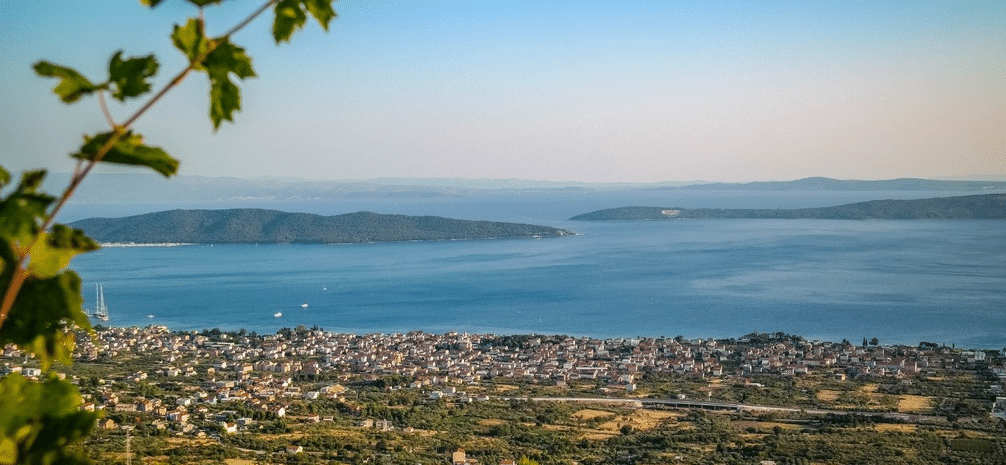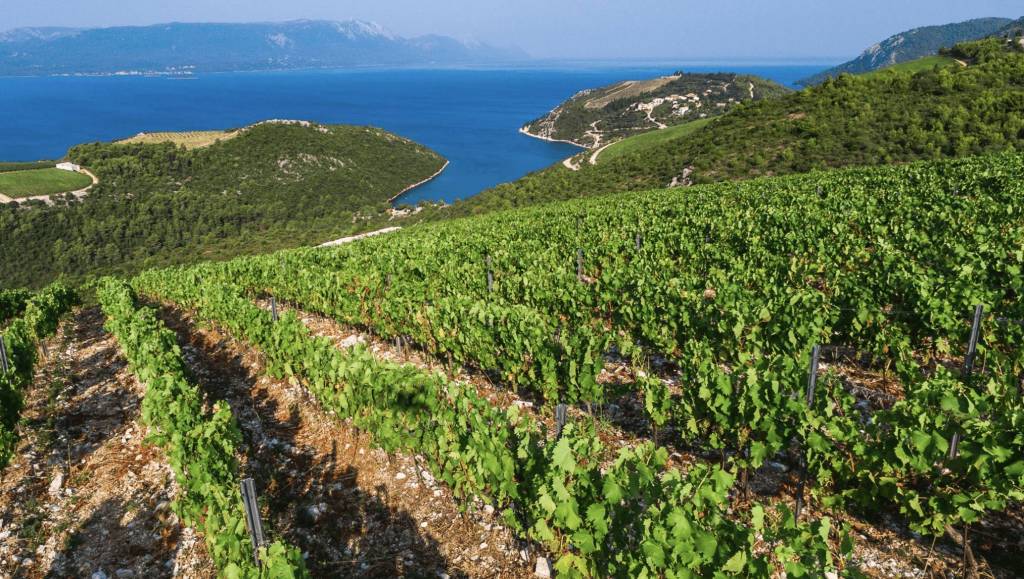In the world of wines, where tradition and history often reign supreme, a discovery has been made that could make for an exciting film! After years of painstaking research and DNA testing of wine grapes from across the globe, the origin of Zinfandel has finally been uncovered. Zinfandel was believed to be an American grape with no known origins outside the United States.
Introduction
For decades, wine experts have been baffled by its mysterious origins. But after painstaking research, the truth has finally been revealed in a shocking twist.
You won’t want to miss the incredible story of how the birthplace of this beloved grape was finally uncovered. Read more to find out the mystery of Zinfandel’s true origin!
The DNA search for Zinfandel origin
A group of American wine producers and scientists have been working together to unravel the mystery of the true origins of Zinfandel grapes, which have been growing in Northern California since the 1960s.
From the 1970s to the 1990s, a conversation about the striking similarities between Zinfandel grapes and one of the most popular Croatian grape varieties called Plavac Mali started to gain momentum. The researchers wanted to uncover the connection between Plavac Mali, Zinfandel, and Primitivo to shed light on the grape that became a uniquely American wine.
Mike Grgich, the co-founder of Grgich Hills Estate in Napa, has long believed that Zinfandel vines in California resembled Plavac Mali in his native Croatia. His suspicions were confirmed in 1967 when a plant pathologist at UC Davis discovered that Primitivo in Italy closely resembled Zinfandel and that Plavac Mali, an indigenous Croatian variety, shared characteristics with both Zinfandel and Primitivo.
“Looking at the vines, I wondered, am I in California or Croatia” he laughed during a scene in the film Dossier Zinfandel.
The University of Zagreb in Croatia provided samples of Plavac Mali to support the research, which included DNA testing. The results showed that Plavac Mali was not Zinfandel.
Dr. Carole Meredith, a grape geneticist at UC Davis, has been closely monitoring the Zinfandel mystery. Dr. Meredith’s team has already identified the parentage of Cabernet Sauvignon, Chardonnay, and Syrah, among others. The team’s latest research involved investigating ancient vineyards in Croatia, where they searched for the original vine that gave rise to Zinfandel.
In 2001. Dr. Carole and the Croatian researchers discovered an old vine called Crljenak Kaštelanski on a cliff near the Dalmatian Coast. Genetic testing in California confirmed that Crljenak Kaštelanski (the red grape of Kaštela in translation) was genetically identical to Primitivo and Zinfandel, revealing its ancestral home. Genetic testing in California confirmed that Croatia’s Crljenak Kaštelanski, a vine on the verge of extinction due to its vulnerability to fungal disease, is the native form of the popular American grape, Zinfandel.
In a vineyard of six thousand vines, only eight Crljenak vines have been found, remnants of a mixed planting by winemaker Ivica Radunić’s grandfather. Further evidence has been found in two other locations 40 kilometers south of the found vines, where vines genetically identical to Zinfandel have also been discovered.
The discovery of five ancient vines, locally known as Pribidrag, in a garden above Omiš town, and at least ten Tribidrag (the oldest Croatian name for Zinfandel) vines growing in the town of Mimice, has added weight to the theory that the Dalmatian region of Croatia could be the true birthplace of Zinfandel. It is estimated that the Tribidrag has been known since the 15th century.
The team behind wineandmore.com created amazing video content that explains the drama surrounding Zinfandel’s origin.
Zinfandel in Croatia
The discovery suggests that Zinfandel has been growing in the region for many centuries, but its thin skin and vulnerability to rot made it less popular in Dalmatian climates. The study also revealed that Plavac Mali, the most widely planted red wine grape in Dalmatia, is a descendant of Zinfandel and an old Dalmatian variety called Dobričić. The research shed new light on the history of the Zinfandel grape and the evolution of grape varieties in the Dalmatian region.
An old grape variety that was widely planted in the Dalmatian region and used to produce popular wines locally and regionally has been found to have several other names.
- Known as Crljenak Kaštelanski in Croatia,
- the grape variety was also called Pribidrag in the Omis area,
- Kratošija in Montenegro,
- and Tribidrag was the oldest and most widespread name used for this economically significant variety in Dalmatia since the 15th century.
Although the grape’s growth in Croatia declined due to a phylloxera outbreak in the 19th century, growers switched to Plavac Mali, a grape variety better suited to the climate and growing conditions.
Zinfandel in Italy
Austin Goheen, a professor at the prestigious University of California at Davis, discovered in the late 60s. While visiting Apulia in Southern Italy, Goheen tasted Primitivo and noticed similarities between its aroma and flavor profiles and those of Zinfandel. Primitivo got its name from being an early ripening grape with “primo,” meaning first and early in Italian.
Zinfandel in California
According to records, the earliest mention of Zinfandel was documented in Boston in 1832. However, its journey to California occurred in the mid-19th century.
The grape was brought to the east coast of the United States in the 1820s from Klosterneuburg, near Vienna. This royal collection contained plants from all parts of the Austro-Hungarian Empire, which included Croatia.
Despite being under-appreciated on the East coast, Zinfandel thrived in California’s climate and soil, leading to increased plantings. Today, Zinfandel is the third-leading wine grape variety in California.
Zinfandel remains a dominant force in the wine industry of California, as affirmed today. Napa Valley and Sonoma County produce some of the most renowned Zinfandel wines.
Primitivo vs. Zinfandel
The California Zinfandel and the Italian Primitivo may be genetically similar, but there are key differences in their taste and aroma. California Zins tend to be bolder in body and alcohol, with jammy fruit aromas and vanilla, cocoa, and cinnamon notes, depending on the French or American oak treatment.
In contrast, Italian Primitivo is more restrained, with earthy and concentrated flavors of wild blackberry shining through. These differences are due in part to the timing of the grape harvest, with California winemakers waiting longer to develop more sugars and ripeness.
There is no denying Zin is boozy fun. You can expect black and red fruit aromas of blackberry, black currant, and cranberries. There are also earthy and black pepper notes on the nose.
Crljenak vs. Zinfandel
Crljenak, a top-quality red wine known for its deep color, big tannins, and notes of dark berries, is gaining popularity among wine lovers. While it is often compared to California Zinfandel and Italian Primitivo due to its genetic relationship, experts note that variations in terroir and production methods create differences in taste and aroma.
Crljenak, Croatian Zinfandel, tends to be fruitier and contains more tannins than California Zinfandel, with a distinctive southern Dalmatian character resulting from the region’s climate, soil, and winemaking traditions.
Croatian Zinfandel revival
With its newfound claim to fame, the grape’s fate began to change. Some estimates are about 250 acres of Crljenak Kaštelanski (about a half-million vines) have been planted in the meantime.
The discovery of this connection sparked renewed interest in Crljenak Kaštelanski in Croatia, and many winemakers began to plant the grape variety once again. The main region where Zinfandel is grown in Croatia is Dalmatia. This coastal region is home to some of the country’s most famous vineyards, including those in the Pelješac peninsula and the island of Hvar. Winemakers in Dalmatia produce Zinfandel wines similar in style to those from California, with bold fruit flavors and high alcohol content.
FAQ About Zinfandel wines
What is Croatian Zinfandel called?
In Croatia, Zinfandel is called: Tribidrag, Pribidrag, and Crljenak Kaštelanski and is grown in the Dalmatia wine region. In Italy, Zinfandel is called Primitivo and is grown mainly in the Puglia region. Different producers also label it as Kratošija in Montenegro and North Macedonia. Despite other names, these wines are genetically equal, with slight differences in aroma and taste depending on the vineyard location and vinification.
Tribidrag, the oldest recorded name for the Zinfandel grape variety, is now recognized as the prime name according to the rule of anteriority.
Jancis Robinson, the co-author of Wine Grapes, confirms this in the book’s entry for Zinfandel by simply stating, “See Tribidrag.”
What Zinfandel tastes like?
This grape variety has a bright, full-bodied flavor with hints of spices such as black pepper, cloves, and anise. Zinfandel is typically described as having intense berry flavors such as blackberry, raspberry, and cherry.
Where to taste Zinfandel in Croatia?
The Zinfandel grape, which was long considered an American native, actually has Croatian origins. The grape is flourishing in various regions of Dalmatia, including Omiš, Komarna, Hvar, Brač, Pelješac, and Konavle, where over two dozen wineries produce Zinfandel. Visitors to the Kaštela region near Split can taste domestic wines and learn about the Crljenak Kaštelanski grape, the original Zinfandel, in family-run wineries like Bedalov, Vuina, and Matela winery. Other producers are Rizman winery in Komarna region, Stina winery in Brač island, Benmosche winery and Korta Katarina winery in Pelješac peninsula, Grabovac winery in Imotski and Mimica winery from Omiš.
Or you can easily order some Croatian Zinfandel from wineandmore.com, the biggest Croatian online wine shop with delivery to EU-wide, UK, USA, Switzerland, and Norway.
Zinfandel food pairing?
When pairing wine with food, Zinfandel is a popular choice that goes well with meat, particularly beef or duck. In addition, Zinfandel is an excellent complement to the traditional Croatian dish pašticada, which consists of beef cooked with plums in red wine. Whether you’re enjoying a hearty meal at home or dining out, Zinfandel is a versatile wine that can enhance the flavors of your favorite meat dishes.
What wine is Zinfandel?
Zinfandel is a red grape variety, but it’s also used to make a wine known as White Zinfandel. In California, Zinfandel thrives due to the region’s favorable climate, which boasts dry and sunny summers and falls with little to no rainfall, preventing the grapes from rotting.
This allows for the production of abundant, top-quality grapes with good acidity. Zinfandel’s versatility also contributes to its success in California, as it can yield a range of quality wines, including rosés, light- and full-bodied reds, and late harvests.
With the right vineyards and winemaking techniques, Zinfandel can produce rich, fruity wines that are unparalleled. White Zinfandel, a sweet pink wine made from the grape, is a popular choice for those starting in the world of wine due to its simple, peachy flavor and high sugar content.
Conclusion
Back in 2001. DNA-profiling techniques have uncovered the surprising origins of California’s popular grape variety, Zinfandel. It has been traced back to its Croatian roots, specifically to the grape variety called Crljenak Kaštelanski, which is grown in Kaštela in Dalmatia.
This discovery has sparked a renaissance of interest in Crljenak as winemakers explore its connection to the American favorite. Zinfandel was once known as California’s “mystery grape” because its origins were unknown.
Croatian wine producers are looking to capitalize on the newfound popularity of the Zinfandel grape, which was long thought to be of Californian origin. The discovery of Zinfandel’s true roots has brought newfound attention to Croatia’s rich wine heritage, which dates back to ancient times.



Pingback:15 Fruits that Start with Z that are Almost too Cool to Eat